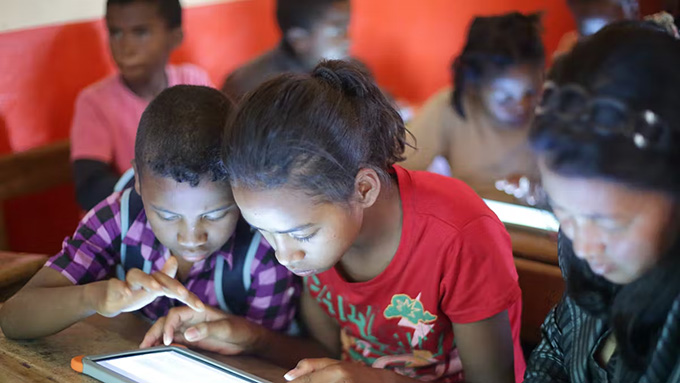
Technology has increasingly blurred the boundaries between the physical and digital worlds. This has led to dramatic shifts in daily life and changed the way children and adolescents live, socialise, move around and learn.
Never before has this been so evident than at the onset of the COVID pandemic and the subsequent exponential rise in technology and internet use. Global estimates suggest that one in three internet users is a child.
Digital technology exposes children to information, social connection, education, online support groups and professional help. Yet, children engaging in the digital world are also exposed to a range of threats. These include inappropriate content (violent or sexual), undesirable contact with strangers and online bullying and victimisation.
The South African Child Gauge is an annual publication that aims to report on and monitor the situation of children in South Africa, in particular the realisation of their rights. This year, the theme of the report focuses on child and adolescent mental health.
Lately, there’s been increasing public debate and concern that digital technologies may contribute to mental health problems such as depression, self-harm and suicide among adolescents and children. To contribute to the collective understanding of the experiences and consequences of growing up in a digital world, our chapter in the Child Gauge report aims to interrogate the impact of digital worlds on children’s mental health. We also want to provide recommendations for policy and practice.
How South African children use digital technology
South Africa has approximately 38 million internet users (1.5 million households). Children most often go online on smartphones, using mobile data at home, and the level of online engagement increases as children become older. Mobile phone plans in South Africa also provide free or cheaper access to social media platforms, resulting in social media use being much more prevalent than any other online activity, driving the content that children engage with online.
The relationship between digital technology and mental health is complex.
Understanding the impact of the digital environment on children’s mental health requires a balanced consideration of not only the potential risks, but also the benefits of the online world.
Not all exposure to online threats leads to harm. For example, participation in a public Facebook group could put a child at risk of sexual grooming, because adults sometimes pose as children. But, this won’t necessarily lead to harm if a child is able to prevent, foresee and manage the attempted harassment.
Adolescents struggling with offline mental health problems may be more likely than others to seek out negative content online. This may amplify their existing mental health issues and may result in self harm. But social media may also be a source of mental health information, support and professional help.
It’s therefore useful to consider how to foster the (digital) resilience of children so that they understand what risks they are likely to encounter at different ages and know when they are at risk. It’s also important that they know what to do and how to recover from adverse experiences.
Keeping children safe online
Realising the benefits of technology for children’s mental health and well-being, while restricting exposure to online threats, requires a holistic approach. This includes recognising the role that parents and caregivers, educators, government regulators, tech companies, and children themselves have to play in promoting children’s mental health and well-being in all aspects of children’s online engagement.
Parents often think that banning social media and the internet will keep their children safe, but that’s not the case. Banning internet use may result in children being socially excluded or prevent them from accessing mental health services or information.
While parental controls and surveillance tech have their place, it’s the internal safeguards like empathy, resilience and values that are more powerful and serve children throughout their lives, whether online or offline.
Parents need to start an open dialogue with their children. This will build rapport and allow children to open up about their social media use. Parents should model good citizenship (social literacy, community engagement, accountability, respecting others’ rights and perspectives) and healthy digital habits for their children as well.
The technology industry has a huge part to play in designing products with the best interests of the child in mind. The privacy of young users’ personal data needs to be protected and their right to freedom of expression needs to be preserved. Systems need to be put in place to address violations of children’s rights when they occur.
School policies, regulations and guidelines should aim to balance the protection of children with their rights to privacy and to use technology in a way that’s appropriate to their age. Such policies should promote positive use of digital technologies, while taking steps to restrict access to harmful content.
Training for educators is also needed so that they can identify children who exhibit symptoms of trauma or distress as a result of online harm and can refer them to psycho-social support services.
Finally, and most importantly, children need access to information, education and training to support the development of their own digital literacy skills. They must feel confident to seek help when needed and know that it will be provided.
Author Bio: Rachana Desai is a Post-doctoral Research Fellow at the University of the Witwatersrand
